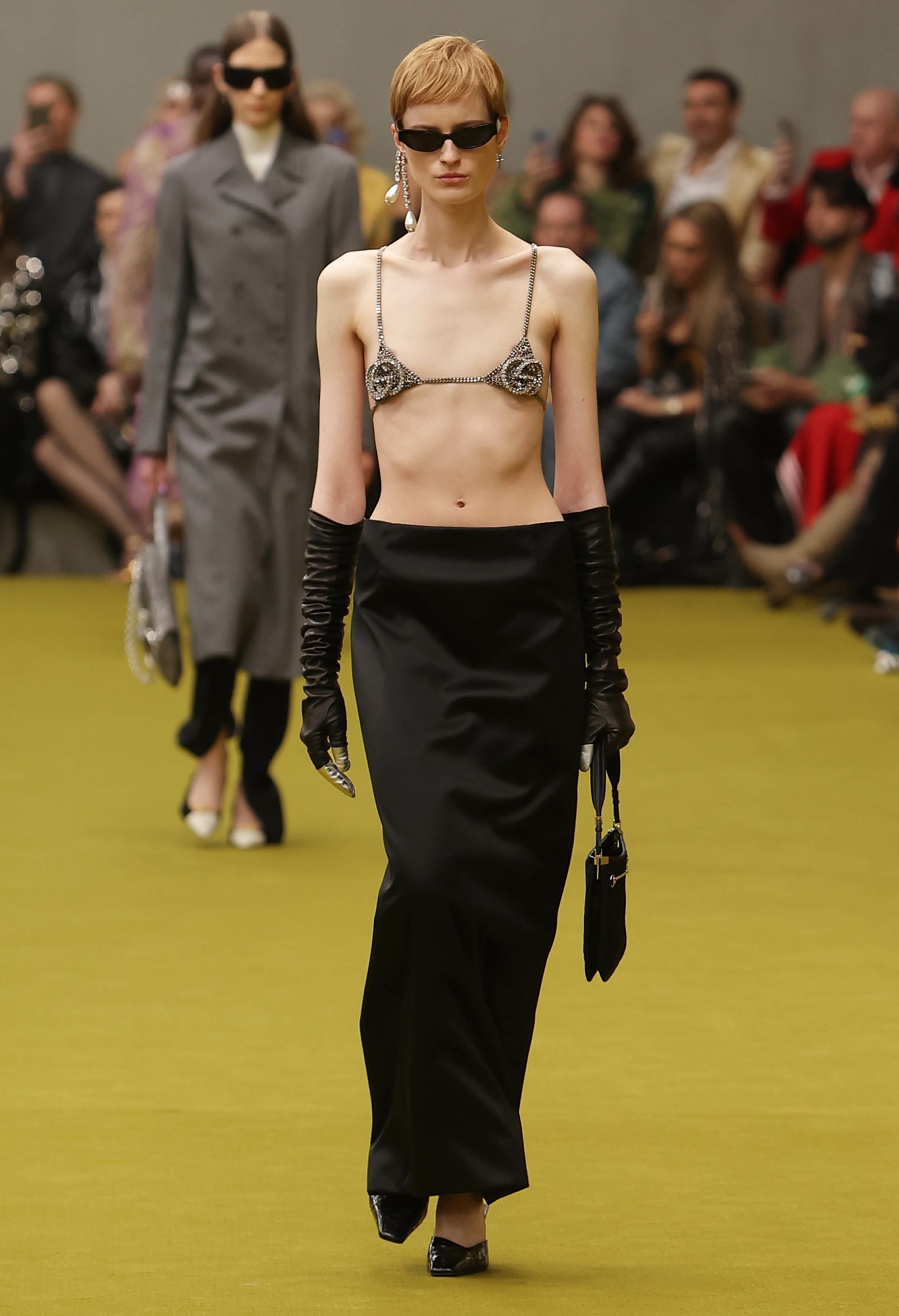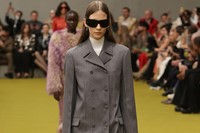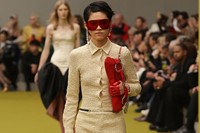Gucci is, currently, expecting. Expecting the arrival of its new creative director, Sabato de Sarno, who will show his first collection for the house in September, bringing with him a new perspective of that label’s century-old history, a new vision for its future. But what to do right now? Instead of mining fashion’s relentless search for newness, for Autumn/Winter 2023 Gucci created a collection, executed by its in-house team, that served as a reminder, of what Gucci has stood for. A recap, a reworking, a reiteration.
That was there in the set itself, with models emerging from elevators as if excavated up from Gucci’s archives, taking a turn, and then heading back down. It’s a fitting metaphor for how creative direction works at established heritage houses today – we’ve seen a few already this fashion month, and will continue to see further takes as the weeks progress. The notion, of course, is to revive and reinvent, tweaking pieces knotted up with a label’s identity to make them exciting enough to elicit desire a second (or third, or fourth) time around. And then, of course, the bit many of us forget – that the new iterations become part of history too, for future creatives to get their teeth into. Which was interesting here, seeing designers riffing on Ford’s ideas and then, sometimes, on those already reworked once by Michele too.
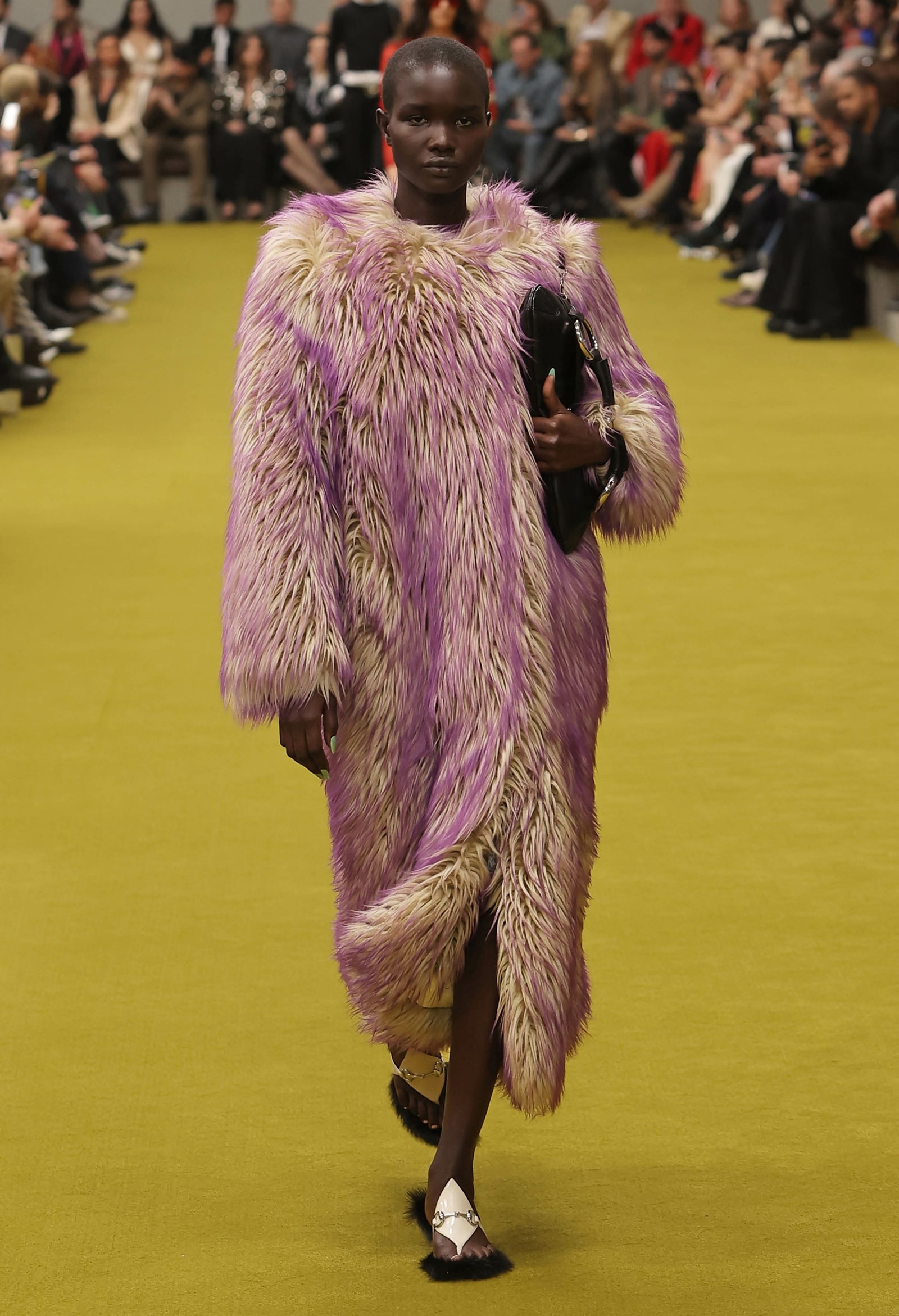
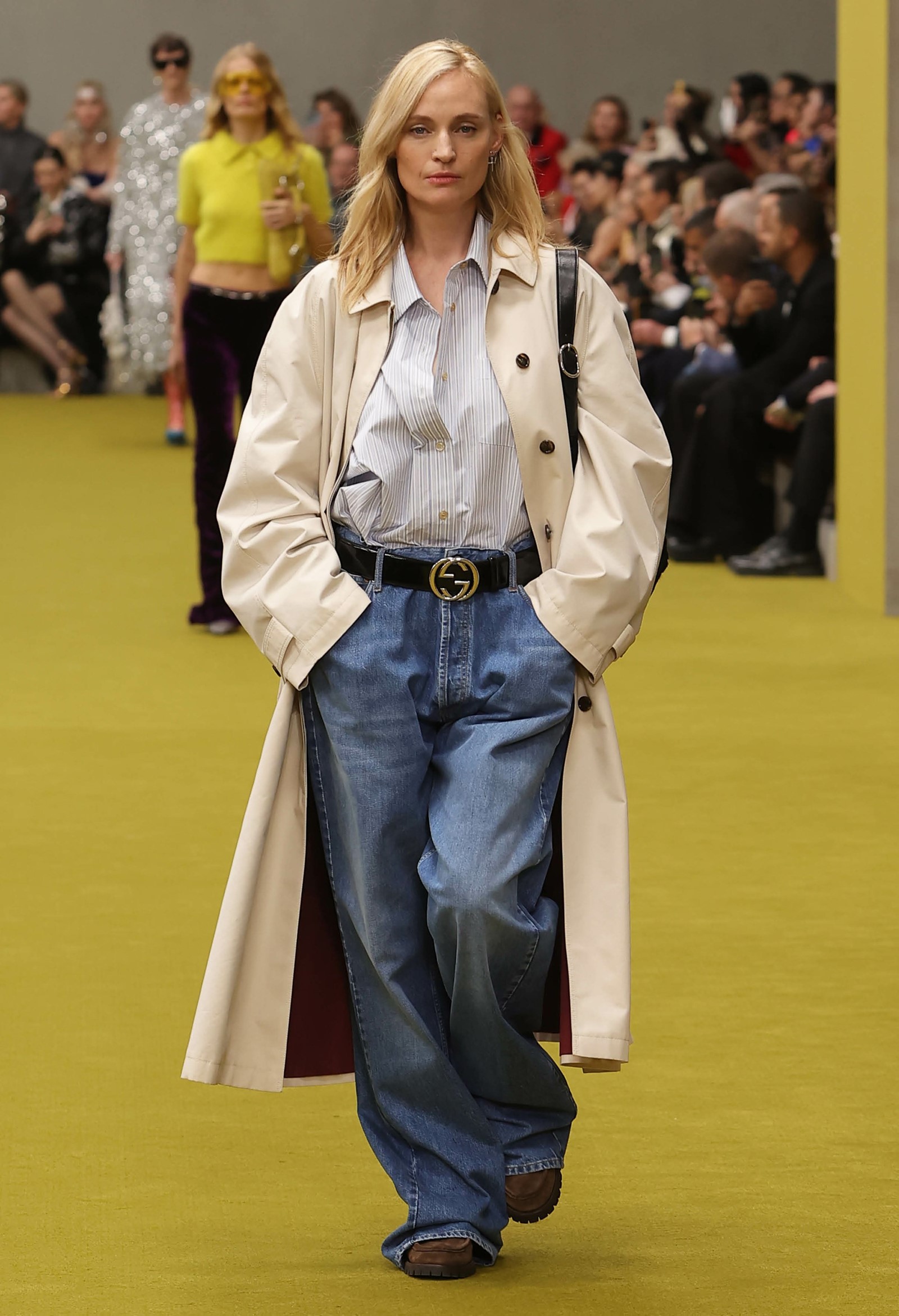
This show wasn’t, however, a total nostalgia trip – although it had elements of that, too. It was impossible not to smile wryly at a soundtrack that mashed together sampled snippets of hits by Britney Spears, alongside clothes that roamed through the greatest hits of Tom Ford – and a few latter-day reflections of the work of Alessandro Michele – with models like Amy Wesson taking a turn, reminiscent of Gucci shows and shoots past. The design team behind the show includes not only those recruited under Michele’s seven-year tenure as creative director, but figures spanning back two decades or more, who not only remember those Ford originals first time around, but helped design them too.

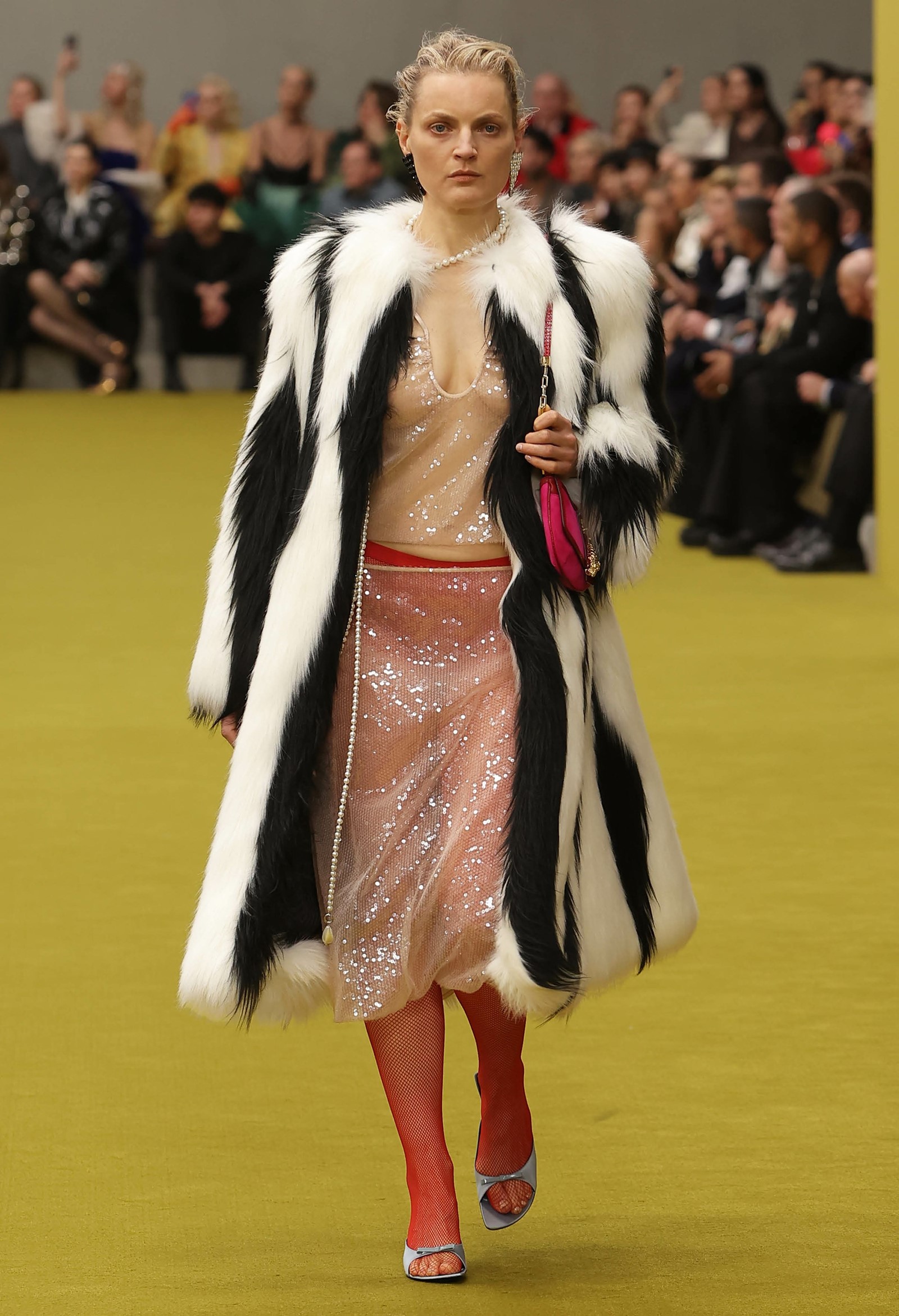
Looking back is, of course, an entirely natural reaction in a moment of change and transmutation – it’s something you see in wider society, especially in fashion, when a shift to the unknown prompts a nostalgia for the familiar and comfortable. This collection could have been much simpler, more overtly referential and reverential, more anodyne. Instead, it had guts and verve, boldly colliding different eras and angles of Gucci into a single multifaceted interpretation. If the Gucci menswear show in January was – bar blingy crystal-logoed jeans – a quietly, classically luxurious take on the house’s history and codes, this outing had a gutsier personality. It was also irreverent with the house’s archetypes and icons: the Jackie bag was beaten up and softened, Gucci loafers were cross-bred with kitten heels, sunglasses were tinted a red taken from the bottle of Gucci’s half-forgotten 1999 perfume Rush. Handbags revived a horse-bit-buckled, lozenge-shaped clutch first proposed by Tom Ford in 2003 – a season he infamously shaved a Gucci-G into the pubic hair of a campaign model, but sold a lot of bags too.
This exercise was a salient reminder of Gucci’s heritage – a whip through the past, informing the present, maybe hinting at the future. It served to remind us all what Gucci stands for – and, perhaps, to hint at some archival gems for de Sarno to explore when he takes the reins.
